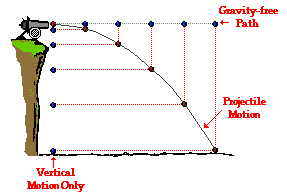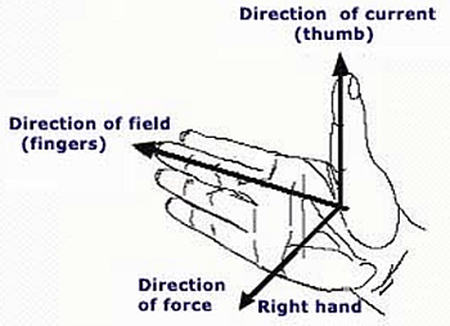We’ve seen a lot of HSC Physics papers completed by students here at Art of Smart, which means we also see a lot of HSC Physics mistakes people make in their papers.
That’s why we’ve collected the top 10 HSC Physics mistakes to help you avoid making the same ones!
Muddling Units and Signs
Mistake #1: Forgetting Units
The unit we present our answer in is of incredible importance, the number simply isn’t enough! Imagine you’re an engineer and I tell you I want a bridge to be 1000 long. You’d have a dumbfounded look on your face and rightly so! 1000 what?
1000 centimetres, inches, feet, yards, or metres?
Without the unit, the answer could literally be anything! Numbers are meaningless in physics without their unit. We don’t know what they represent.
PRO-TIP: Always write down the unit!
Mistake #2: Not Presenting Answers in SI Units.
Now let’s say you did write down the unit, the next question to ask yourself is:
“Is my answer in SI units?”
The scientific community expects answers to be in a certain unit system. We have a rough idea of what SI units represent and so if everything we measure is in SI units, it just makes comparison a lot easier!
If you’re measuring a hall, and someone says it’s 20×20 metres, you’d have a very good mental model of what to expect.
If someone said it was one square chain, with a smile on their face, you certainly wouldn’t have one on yours – sure they gave you a unit, but it’s as good as worthless. NOBODY with an ounce of sanity uses chains!
Mistake #3: Potential Changes and Negative Signs
A lot of my student’s have been confused about Gravitational Potential Energies and negative signs in the past.
That’s okay, IT IS confusing, I found it incredibly confusing until I had a good picture of how it all worked. Let me share it with you!
Why is there a negative at all?
Rule 1: Gravitational Potential energy is 0 at an infinite distance away from a body.
Example: Imagine you’re an ant on the andromeda galaxy, can you see the earth, would you even know it existed, and most importantly would you feel the Earth’s gravity. Probably not! Since we aren’t really affected by things far away from us, we define gravitational potential to be zero really far away! (Yep, even physics is self centred).
Rule 2: As you increase distance away from the earth gravitational potential increases.
Example: If you lift your phone off the table, its potential increases! If you drop it, that potential energy is turned into kinetic energy.
It’s because of rule 1 and rule 2, that there is a negative sign. Think about it!
How do we get a number to get bigger and bigger, but end up at 0?
We start at a very negative number, and if we keep increasing the number we’ll eventually get to 0! It will make sense if you look at this picture.

If you’re calculating the potential of an object at a particular height the answer will be negative for the reasons stated above. Here’s the catch though! Whenever you’re calculating a CHANGE in potential.
This is all you have to remember:
If there’s a drop in height the potential change will be negative
If there’s an increase in height the potential change will be positive
Projectile Motion
Mistake #4: Forgetting the Independence of Vertical and Horizontal Velocity
Galileo discovered that in projectile motion, the horizontal and vertical components of velocity were completely independent, i.e. they do NOT affect each other. Here is the classic example:

We see a cannonball that is simply dropped vertically, whilst another cannonball is shot out horizontally at the exact same time.
Which will hit the ground first?
Neither, they both hit the ground at the same time! Why?
Since they both had the same inital vertical velocity, namely 0.
Sure, one had a horiztonal velocity, but that’s irrlevant it doesn’t affect the vertical component, and ONLY the vertical component affects how long it takes the cannonball to hit the ground.
Mistake #5: Assuming Net Velocity is 0, at the Apex of Projectile Motion
Another common projectile motion mistake is assuming the velocity at the apex is zero.
This is a pervasive misconception, the vertical velocity is zero, not the net velocity, there is still some horizontal velocity!
Remember, there is no horizontal acceleration, the horizontal velocity is constant.
The Movement of Light
Mistake 6: Forgetting the Constancy of Light
Imagine you’re running at 10ms^-1 and throw a javelin at 5ms^-1.
What’s the speed of the javelin relative to the ground? 15ms^-1 of course!
However, if you’re in a car going at 50ms^-1, and then shine a torch.
The light is NOT going at c + 50. The speed of light is constant everywhere.
This is incredibly bizarre, and you should be uncomfortable with it. It took the genius of Einstein to unravel it!
If you still need support with your content reach out to our HSC Physics tutors today who can tailor support to meet your individual needs.
Mistake 7: Forgetting the Aim of the Michelson Morley Experiment
The aim of the Michelson Morley experiment was to determine the velocity of the Earth through the aether. The aim was not to test the existence of the Aether.
They weren’t even questioning its existence. It was just assumed to exist, it was just a matter of finding out how fast we were going through it!
In modern times, we are quite certain the Aether doesn’t exist, so it’s unsurprising Michelson and Morley were unable to determine the speed of the Aether.
The experiment produced a NULL result, they were unable to detect what they were trying to detect, they did NOT disprove the Aether.
Electricity and Magnetism
Mistake #8: Forgetting to Adjust Hand Rules for Different Situations
The right hand rule is a great mnemonic device to help remeber the direction of forces on charges.
It doesn’t magically solve any problem involving charges though, you need to use it correctly! Here are some useful tricks to remember:
1. If the question involves fields around a wire, or the magnetic field of a solenoid, you’re best off using the right hand grip rule!


2. For positive charges use the right hand palm rule!

If the question involves a negative charge or induction use the left hand palm rule.
Each part of your hand will represent the same thing, it will just make sure you’re getting the directions right!
Mistake #9: Confusing Back EMF with Everything Else!
Nike’s are a very specific brand of shoe, in much the same way Back EMF is a very specific time of induction. Let’s go through all the various types of induction quickly:
Faraday’s Law: Is the phenomenon that a changing magnetic field near a piece of metal will induce an electric current inside the piece of metal.
Lenz’s Law: Describes which way the current induced by Faraday’s law points.
Back EMF: Is the name we give to Faraday’s Law and Lenz’s law acting in a motor.
In a generator we have a coil moving in a magnetic field, so by Faraday’s law there is an induced EMF. Lenz’s law tell us that current will oppose the field that created it.
In a motor we have a coil moving in a magnetic field, so by Faraday’s law there is an induced EMF.
Lenz’s law tell us that current will oppose the field that created it. Similar right? Absolutely!
In fact, it’s identical so far. Here’s the difference though: In a motor, we put in the current making the motor spin, so the induced EMF is cancelling out the current we put in.
Thus, we call it back EMF. In the generator, we didn’t put in any current, the induced emf is the only emf in the coil so we don’t call it back emf.
Mistake #10: Using Lenz’s Law Instead of the Meissner Effect
Whenever you’re dealing with superconductors hovering, the best explanation to use is the Meissner Effect. It says that a superconductor will exclude all external fields from entering it.
If you’re trying to explain superconducting phenomena just use the Meissner Effect, only use Lenz’s law for topics in motors and generators!
Lenz’s law simply cannot explain some hovering phenomena, it is not the correct explanation.
And so, that wraps up our top 10 HSC Physics mistakes! May you go forth and not make the same mistakes!
Looking for some extra help with HSC Physics?
We pride ourselves on our inspirational HSC Physics coaches and mentors!
We offer tutoring and mentoring for Years K-12 in a variety of subjects, with personalised lessons conducted one-on-one in your home or at our state of the art campus in Hornsby!
To find out more and get started with an inspirational tutor and mentor get in touch today!
Give us a ring on 1300 267 888, email us at [email protected] or check us out on Facebook!
Vamsi Srinivasan is looking to uncover the next hidden truth of the universe. He was fascinated by the beauty of Physics and Mathematics during his HSC. Now, he’s in his third year of a dual degree in Physics/Computer Science. Vamsi wanted to share his passion for Maths and Physics and has been an Art of Smart coach for the past 3 years. He coaches students in Physics as well as all ranges of HSC Maths from General to Extension 2. In his spare time you can find him watching Tennis or listening to his favourite podcast ‘Hello Internet’.


